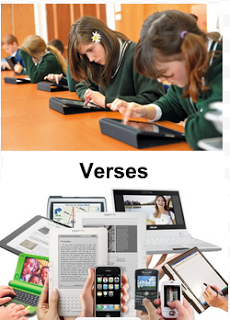Ed-specific or student specific? Which device is right for your school?

With the recent release of News Corp’s Amplify Tablet, the discussion of ed-specific verses student-specific devices has come to the forefront. Some argue for ed-specific devices: a sort of all-in-one reply to education technology needs. A device just for education that’s loaded with filtering and management software sounds like a simple and convenient solution to many IT and administrator concerns.
But what about districts who’ve already made the investment in a variety of different devices? What about schools that accept hardware donations from the community or those that have multiple platforms as a result of being awarded various grants? What about schools that invite students to bring your own device (BYOD)? And what about teaching students on a device that is the same as the one they use in the world today or will use in life after graduation?
Studies show that 65% of middle school students already own and use a smart phone and/or tablet device. Does it make sense to introduce another one and one that often can’t be used in the world outside of school? Is a hardware solution the best fit for all schools looking to go mobile, or is that too limiting?
What do you think makes the most sense: One-size-fits-all ed devices or those that are individualized and real-world?
When considering device purchases for schools, it is important to keep in mind that education is truly an industry of individuality—no two students, classrooms, schools or districts are identical. Individuality calls for flexibility. For some schools a content filter and mobile device management (MDM) that can be applied to any device might be the more appropriate option for the classroom.
The hardware is really just a platform, a tool. And again and again experts advise starting with the goals and then choosing the right hardware (not the other way around). There are device agnostic mobile learning solutions with filtering, learning management systems and MDM applicable to the devices most used by schools and individual students. If the goal of mobile learning is to create a more flexible, individual form of education, then does choosing a one-way, one-size-fits-all hardware solution really make sense?
Lisa Nielsen writes for and speaks to audiences across the globe about learning innovatively and is frequently covered by local and national media for her views on “Passion (not data) Driven Learning,” "Thinking Outside the Ban" to harness the power of technology for learning, and using the power of social media to provide a voice to educators and students. Ms. Nielsen has worked for more than a decade in various capacities to support learning in real and innovative ways that will prepare students for success. In addition to her award-winning blog, The Innovative Educator, Ms. Nielsen’s writing is featured in places such as Huffington Post, Tech & Learning, ISTE Connects, ASCD Wholechild, MindShift, Leading & Learning, The Unplugged Mom, and is the author the book Teaching Generation Text.
Tools and ideas to transform education. Sign up below.
Disclaimer: The information shared here is strictly that of the author and does not reflect the opinions or endorsement of her employer.
Lisa Nielsen (@InnovativeEdu) has worked as a public-school educator and administrator since 1997. She is a prolific writer best known for her award-winning blog, The Innovative Educator. Nielsen is the author of several books and her writing has been featured in media outlets such as The New York Times, The Wall Street Journal, and Tech & Learning.
Disclaimer: The information shared here is strictly that of the author and does not reflect the opinions or endorsement of her employer.
